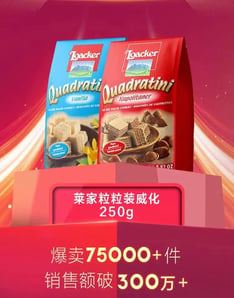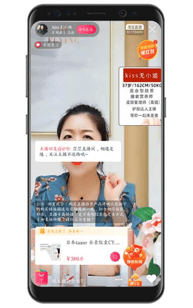Which festivals serve your brand better
Around 35% of China’s sales happens online, according to eMarketer, a New York-based research company. China’s online retail market is larger than the next 10 markets combined. That receptive attitude has given rise to innumerable “shopping festivals” in China, contributing greatly to e-commerce sales in China, which reached $1.5 trillion (10.63 trillion yuan) in 2019. That’s bigger than the GDP of Spain.

During shopping festivals people snap up great bargains both online and offline. But that is not all. Shopping festivals occupy a special place in the heart of Chinese consumers – a key reason brands need to learn to navigate the long list of shopping holidays on the national calendar. Unlike Western shopping holidays that focus on discounts only, shopping festivals in China provide a vehicle for many Chinese, especially the young people, to exhibit their identity and to thank their beloved ones.
In this article we will look at the major festivals you can choose from and the cases of luxury brands, packaged food, and sun-care products as well as the importance of live streaming during the festivals.
Double 11, from Singles’ Day to #1 shopping festival
Tmall and Double 11 are now indispensable positions for brands because they have mature e-commerce infrastructure and are a more efficient conversion funnel. In 2020, Alibaba generated $74.1 billion of GMV (Gross Merchandise Volume) during the Double 11 (Nov. 11) Global Shopping Festival, the crown jewel of all shopping festivities in China.

It is said that November 11, 1993 was the day when a group of college students in China created the Singles’ Day. It was an occasion to celebrate being romantically unattached for some and an opportunity for others to find love. By inventing a new festival to express themselves, the young people in China demonstrated more freedom for creativity in the Chinese society as the country was increasingly opened-up.
In 2009, Alibaba took that idea and promoted its products online with deep discounts, as it will be “embarrassing” to shop alone. With quick information on new products and AI that pushes products you may like, buyers have been attracted to purchase more and more. But they have also used the opportunity to express their self-image and demonstrate the increased control they have over their own lives through consumption.
Some critics however have expressed concerns that compared with the many off-line activities young people have organized in the past to celebrate Singles Day, the addiction to online shopping or “duoshou” (cutting off once hands to get rid of the addiction to online shopping) has killed the vibe of the festival.
Gifts for the beloved ones
International Women’s Day
International Women’s Day falls on March 8 every year and is commonly referred to as the “3.8 Festival.” The day has been celebrated in China since 1924 as a day to recognize the importance of women. To attract consumers to get gifts for their girlfriends, wives and mothers, some e-commerce platforms have renamed the March 8 shopping festival: Alibaba calls it “Queen Festival,” while JD.com calls it the “Butterfly Festival.”

Interestingly, young girls in China thought it unfair that March 8 was for “women,” and so they created their own “Girl’s Day” to be celebrated on March 7. On this day, boys give presents to girls, and some even head for their first dates, another win for retailers in what the media has coined a growing “Sheconomy.”
Spending by women in China increased 81% to $670 billion in the five years ending 2019, according to Guotai Junan, an investment bank.
Love Festival: 5.20
May 20 is an unofficial Valentine’s Day in China because the pronunciation of the numerical form 5.20, or “five two zero,” is somewhat similar to “I Love You” in Mandarin. Love remains in the air as two more days are celebrated in the year with equal zest in China — February 14, Valentine’s Day, and the Qixi festival, which falls on the seventh day of the seventh lunar month (Aug 25 this year). These holidays are a great time for couples to exchange gifts.
Other important shopping festivals
Midyear Shopping Festival: 6.18
The June 18 festival was started by JD.com, China’s third largest e-commerce platform, to mark its anniversary in 2010. June 18th is the day with the biggest sales promotion on JD.com, echoing Tmall’s Double 11. It has become the largest midyear online shopping event in China. Other e-commerce platforms have launched their own promotions and the day has become synonymous with a midyear shopping binge.
Spring Festival
During the spring festival this year, as many urban migrants were unable to return home to celebrate with their families due to COVID-19 restrictions, online shopping, catering and other forms of online consumption have replaced more traditional activities. Between January 20 and February 18, online retail sales reached 906 billion RMB ($139 billion). Several e-commerce giants launched shopping events during the period and some were co-organised with local governments. Douyin’s sixteen-day long shopping bonanza, which was the first organised by the platform, brought in 20.8 billion RMB ($3.2 billion).
Singles Sequel: 12.12
Dec. 12 is traditionally a day for inventory clearance. It is also popular in other parts of Asia, with online platforms such as Shopee, Lazada and Zalora throwing in great deals. With the New Year just round the corner, this online carnival is perfect for shoppers to snap up gifts for the holiday season.
More than discounts, new product launches at festivals
Instead of deep discounts, festival shoppers in China have come to focus on novelty and excitement, which offers a unique opportunity for luxury brands to engage with them during these holidays. The success of French luxury home furnishing brand Christofle during Double 11 last year is enough to illustrate this. The brand launched a new Royal Jack collection of pet accessories and featured special collections created by singer Pharrell Williams and Chef Jean Imbert. While there were gifts with purchases and lucky draws, the brand strategically decided not to offer any discounts.
“Tmall is our biggest display window in China. The fact Christofle could succeed without dropping prices was key learning about festivals in China,” Christofle CEO Nathalie Remy said. The brand recorded five times its average daily sales on 11.11 and, during the festival, also found potential consumers whom it can re-target.
Duhno has supported Loacker, an Italian brand for high quality wafer, patisserie and Chocolate specialties, at the 618 festival. The festival was been strategically picked to promote a new product.



Strategy for festivals must start weeks/months before the actual festival day - especially if you want to book famous KOLs, price and availability must be negotiated way before. So many products want to be displayed, you need to make sure to have a broadcast slot.
Festivals are not just for big brands
Festivals in China are not just for large multinational brands. Small brands can also gain significant visibility by participating in shopping festivals such as 6.18 and 11.11, with "right content and marketing investment." The advantage of small brands lies in their ability to fulfill niche consumer demands from increasingly sophisticated Chinese consumers.
Texas-based sun-care brand Supergoop was one emerging brand that launched in China in early 2020, just when Covid-19 started to hit. This American niche brand only entered the Chinese market in November 2019 and joined in Tmall International in March of the following year. During its first 6.18 shopping festival marketing campaign, Supergoop entered the live broadcast of Taobao live KOL Li Jiaqi, the “lipstick king” and one of the top beauty influencers in China in recent years. The result was “beyond its wildest imaginations,” and “it was the first time to see how we would stack up as a newbie in the market,” said Amanda Baldwin, President of Supergoop.
Livestreaming a key part of a winning festival strategy

The emerging marketing model of "live delivery with goods" stimulated the buying boom. A large number of anchors live on Alibaba's e-commerce platform to interact with fans in real time. This model is similar to home shopping channels and is becoming more and more popular in China.
Using livestreaming to engage Chinese consumers has become an absolute necessity for brands after the Covid-19 outbreak. A record 560 million Chinese consumers were watching livestreaming by March 2020. Because of the interactive selling nature, livestreaming not only generates substantial sales for brands but also helps maintaining relationships with the consumers. Viya, the top live streamer on Taobao for example, livestreamed to over hundreds of millions of viewers during the annual two-day Singles’ Day shopping event last year. Her audience spent over 4.8 billion yuan ($719 million) on products she promoted.
Livestreaming sessions can take a variety of forms. Top Key Opinion Leaders (KOLs), in-store associates, brand CEOs and even virtual anime figures can all be livestreaming hosts for brands. Brand CEOs are best explaining their product functions, while virtual livestreaming idols are well-followed by Gen-Z consumers.
Duhno can accompany your brand with the right online strategy and work on the festivals that would serve your brand the most.
Reference:
- https://www.alizila.com/wpp-report-shows-what-brands-can-learn-from-chinas-shopping-festivals/
- https://daoinsights.com/news/sales-of-online-chinese-new-year-shopping-festival-surpass-139-billion/
- https://www.weforum.org/agenda/2021/05/china-future-social-commerce-content/
- https://www.thepaper.cn/newsDetail_forward_1856727